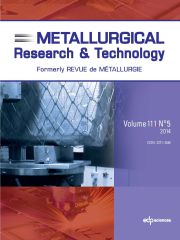Article contents
Long term aging of various duplex stainless steels between 250°C and 400 °C – relationship between toughness measurements and metallurgicalparameters
Published online by Cambridge University Press: 01 December 2011
Abstract
Embrittlement of duplex stainless steels after aging below 500 °C is a well documentedphenomenon, usually attributed to the unmixing of the ferritic Fe-Cr solid solution,either by spinodal decomposition or by nucleation and growth of Cr-rich α′ phase,depending on aging temperature. Additional precipitation taking place during aging, likeNiSiMo-rich G phase or Cu-ε, are also known to participate to embrittlement, making thecomposition dependence of embrittlement kinetics even more intricate. In this study, longterm aging treatments, up to 2 years at intermediate temperature (250–400 °C), have beenperformed for various duplex stainless steels grades containing different alloyingcontents in Cr, Mo, Si, Ni and N. Impact toughness has been measured after each agingcondition, and an apparent activation energy could be deduced for the various grades. Thisquantity is a good indicator of embrittlement resistance. Fine microstructuralcharacterizations have been performed in the ferrite: composition before aging wasdetermined by EPMA, and precipitation state before and after aging was observed on TEM.The influence of alloying elements on the embrittlement phenomenon is analyzed on thebasis of these results and of driving force calculations performed onThermo-Calc®.
Keywords
- Type
- Research Article
- Information
- Copyright
- © EDP Sciences, 2011
References
- 3
- Cited by


